| |
ASM/ICAAC: Tenofovir Alafenamide in Participants with
Diabetes and Renal Impairment:
Renal Safety Through 96 Weeks
|
| |
| |
Study GS-US-292-0112
Reported by Jules Levin
ASM/ICAAC 2016
June 16-20, Boston
David K. Stein,1 Anton Pozniak,2 Samir Gupta,3 Frank Post,4 Jose Arribas,5 Mark Bloch,6
Paul Benson,7 Gordon Crofoot,8 Shuping Jiang,9 Moupali Das,9 Marshall W. Fordyce9
1Albert Einstein College of Medicine, Bronx, NY; 2Chelsea and Westminster Hospital NHS Foundation Trust, London, UK; 3Indiana University School of Medicine, Indianapolis, IN; 4King's College Hospital NHS Foundation Trust, London, UK; 5Hospital Universitario La Paz, IdiPAZ, Madrid, Spain; 7Be Well Medical Center, Berkley, MI; 8Gordon Crofoot Research, Houston, TX; 9Gilead Sciences, Inc., Foster City, CA

Program abstract
Background: Efficacious and safe antiretroviral regimens are needed for HIV-infected patients with diabetes. Tenofovir alafenamide (TAF) has 90% lower plasma tenofovir levels compared to TDF, and has no effect on renal tubular function. Study 112 assessed the safety and efficacy of a single tablet regimen of elvitegravir, cobicistat, emtricitabine, and TAF (E/C/F/TAF) in HIV-1 infected adults with renal impairment from multiple causes. Outcomes in diabetics have not been reported.
Methods: 242 virologically suppressed adults with stable renal impairment (eGFRCG 30 to 69 mL/min) had their treatment switched to once-daily E/C/F/TAF. Week 96 safety results for patients with diabetes are presented.
Results: 33/242 (14%) who switched to E/C/F/TAF had diabetes. At baseline, more diabetic patients were of black race (33% vs 16%) and had hypertension (58% vs 36%). At Week 96 week, 94% of diabetics remained virologically suppressed. Estimates of glomerular function among diabetics remained stable: median change from baseline eGFRCKD-EPI sCr 0.0 mL/min/1.73m2 (p=0.86), and eGFRCKD-EPI cys C +0.5 mL/min/1.73m2 (p=0.97). Tubular proteinuria improved significantly for diabetic subjects switching to E/C/F/TAF (retinol binding protein:Cr, median % change -68, p=0.048; beta-2-microglobulin:Cr, median % change, -82, p<0.001), while decreases in median total proteinuria (UPCR, -28%, p=0.077) and albuminuria (UACR, -42%, p=0.50) were not significant. One diabetic subject discontinued therapy due to eGFR decline below 30 mL/min without evidence of tubulopathy.
Conclusions: HIV-infected patients with renal impairment (eGFR 30 to 69 mL/min) and diabetes who switched to once daily single-tablet E/C/F/TAF had durable virologic suppression and positive renal outcomes after two years. These data support the use of E/C/F/TAF as a potent and safe regimen for diabetic adults with impaired renal function.

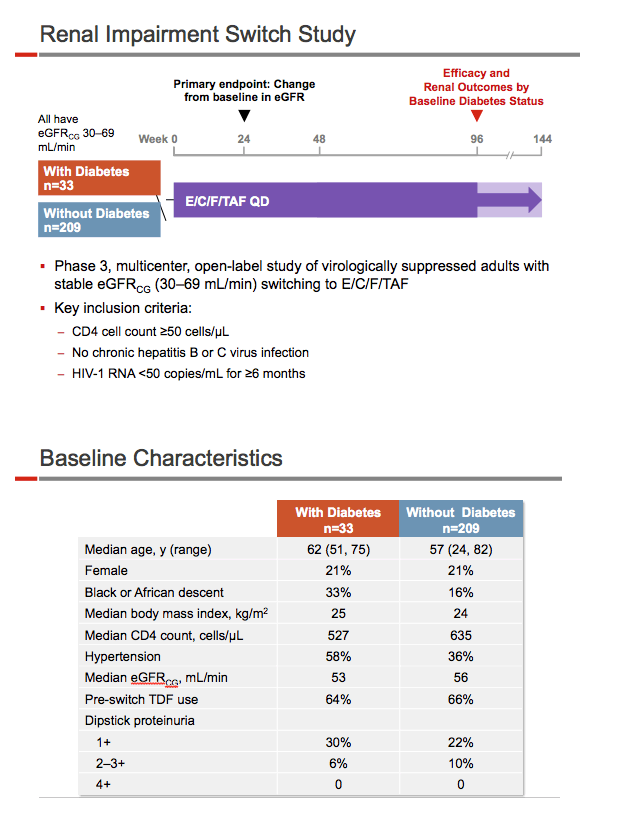
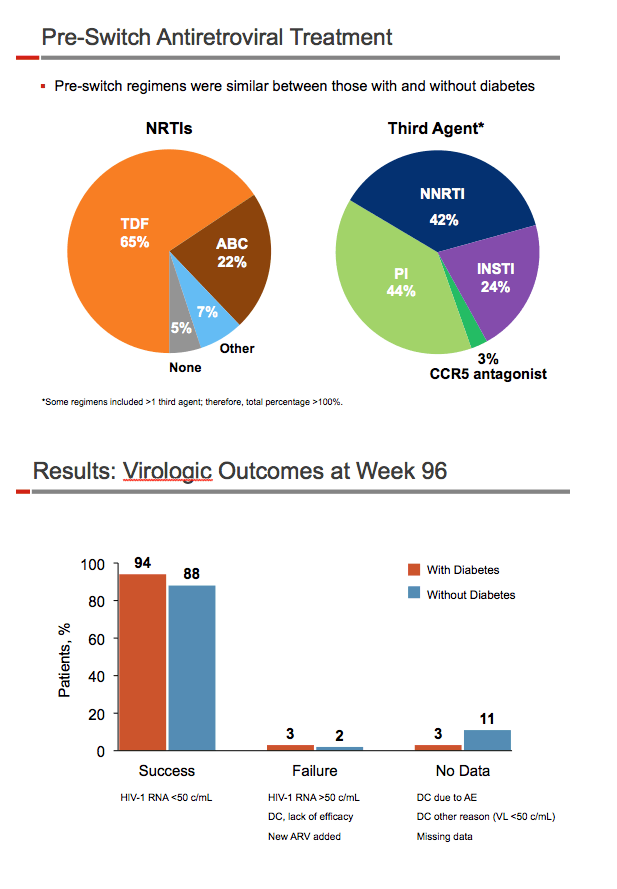
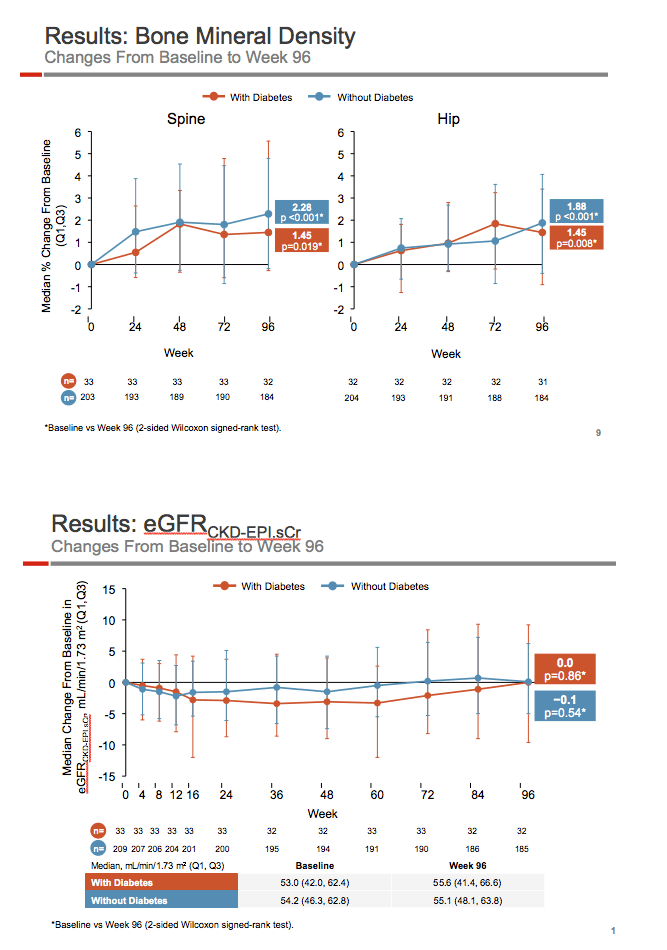
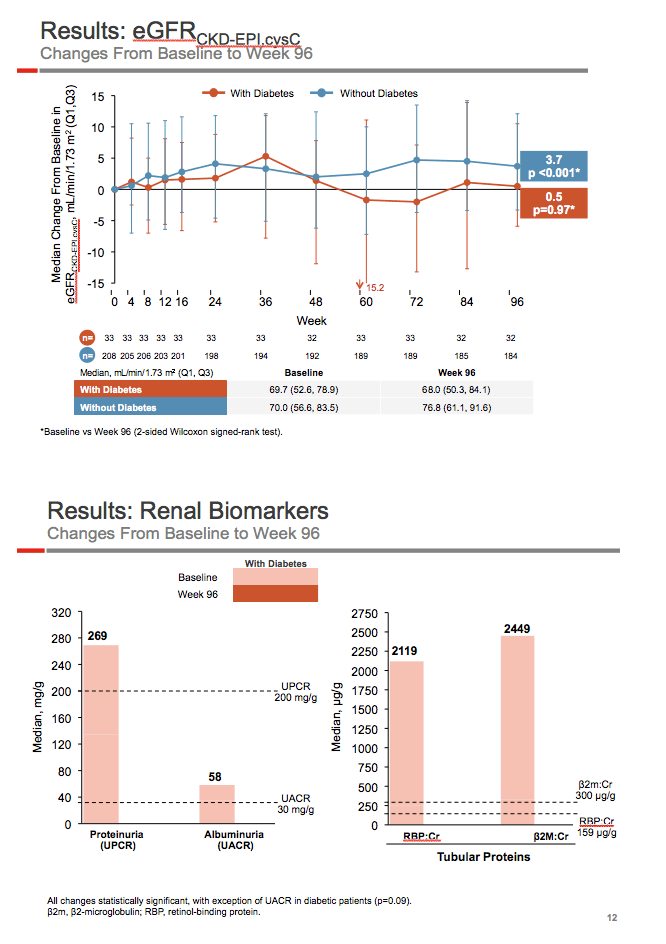
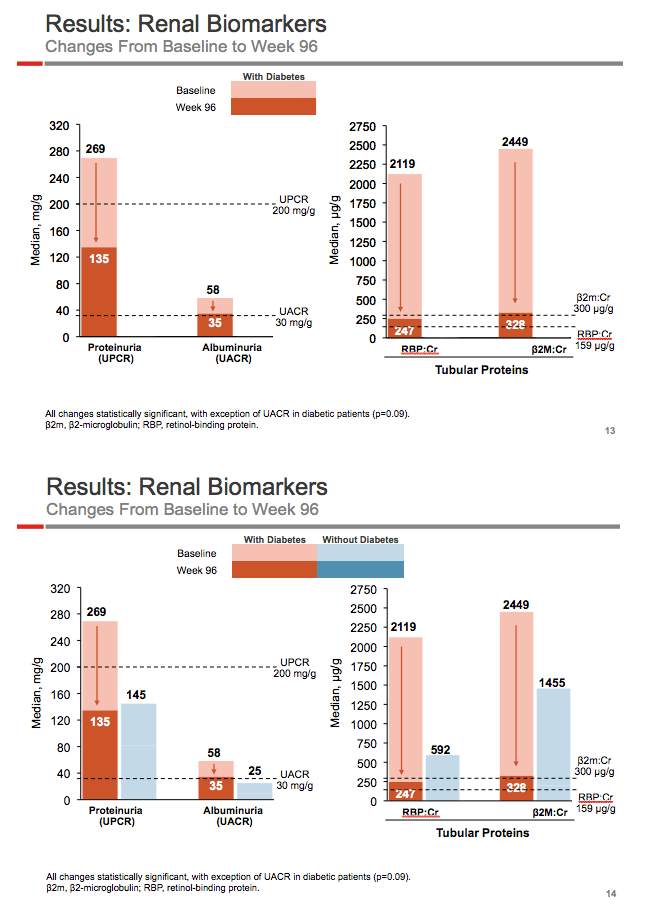
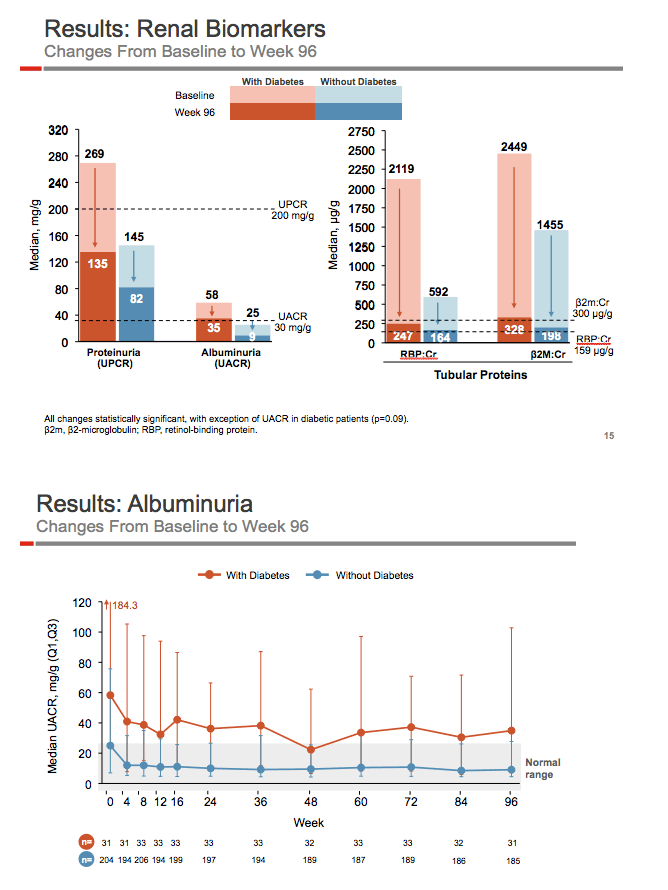
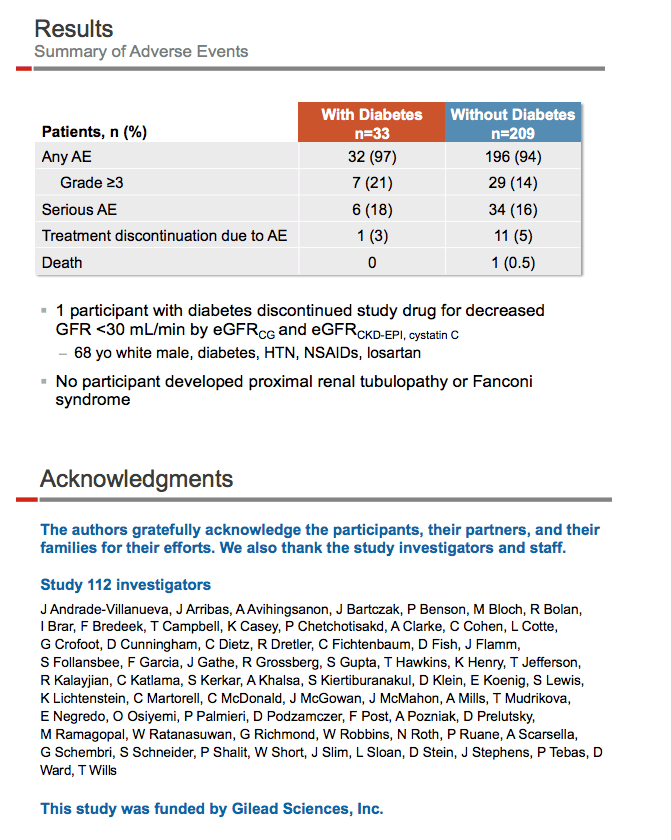
|
|
| |
| |
|
|
|